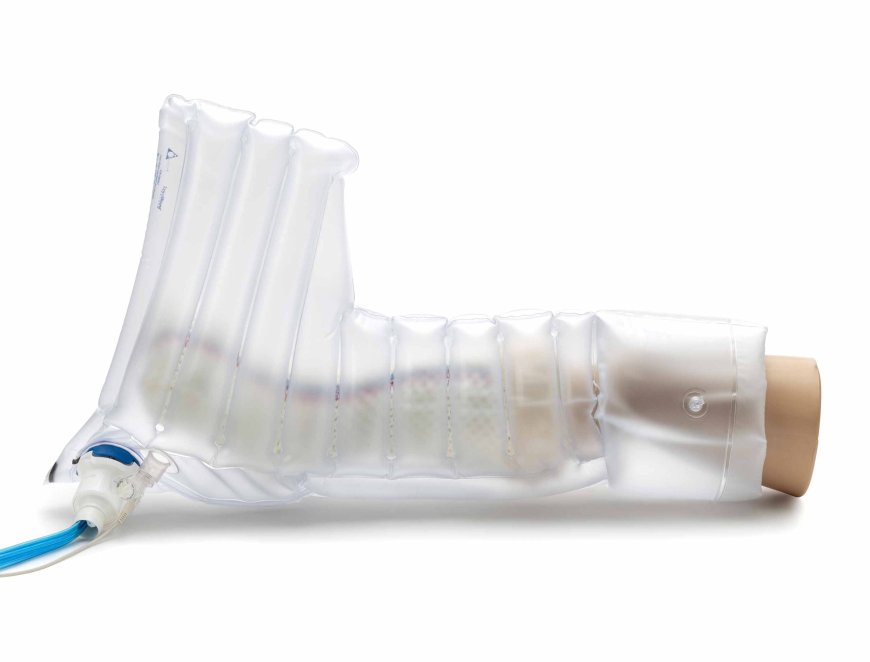Understanding Wound Healing Challenges in Diabetes: Arterial Leg Ulcers and Diabetic Foot Infections!
In conclusion, wound healing challenges in diabetes, including arterial leg ulcers and diabetic foot infections, represent significant clinical concerns that require comprehensive management strategies.

Wound healing is a complex biological process that involves a series of intricate steps aimed at repairing damaged tissue and restoring normal function. However, in individuals with diabetes, this natural healing process can be significantly compromised, leading to a range of complications, including leg infections, arterial leg ulcers, and diabetic foot infections. These complications not only pose significant health risks but also have a profound impact on the quality of life of diabetic patients.
Diabetes, a chronic metabolic disorder characterized by high blood glucose levels, affects millions of people worldwide. One of the most concerning complications of diabetes is its detrimental effect on the body's ability to heal wounds. This impaired wound healing and diabetes is primarily attributed to several factors, including poor blood circulation, nerve damage (neuropathy), weakened immune function, and chronic inflammation.
Preventing leg infection in diabetic requires proactive foot care and diligent wound management. Patients should inspect their feet daily for any signs of injury or illness, such as cuts, blisters, or redness. Proper wound care, including cleaning the wound with mild soap and water, applying antibiotic ointments, and covering the wound with sterile dressings, can help prevent infection and promote healing. It is also essential for diabetic patients to wear well-fitting shoes and avoid walking barefoot to reduce the risk of foot injuries.
Leg infection in diabetic: A condition characterized by narrowed or blocked arteries in the legs
Arterial leg ulcers are a common complication of diabetes, particularly in individuals with poorly controlled blood sugar levels. Leg infection in diabetic typically occurs on the lower legs and feet and is characterized by slow healing, pain, and the formation of necrotic tissue. The underlying cause of arterial leg ulcers in diabetic patients is often peripheral artery disease (PAD), a condition characterized by narrowed or blocked arteries in the legs due to atherosclerosis. In individuals with diabetes, the combination of PAD and impaired wound-healing mechanisms significantly increases the risk of developing arterial leg ulcers.
Managing arterial leg ulcers in diabetic patients requires a multidisciplinary approach that addresses the underlying vascular issues, optimizes blood sugar control, and promotes wound healing. Treatment may involve revascularization procedures to improve blood flow to the affected area, wound debridement to remove necrotic tissue, and advanced wound dressings to promote tissue regeneration. Additionally, patients may benefit from lifestyle modifications, such as smoking cessation and regular exercise, to improve overall vascular health and facilitate wound healing.
Managing arterial leg ulcers in diabetic patients requires a multidisciplinary approach.
Diabetic foot infections represent another severe complication of diabetes and impaired wound healing. These infections often develop due to minor foot injuries or bacteria-contaminated ulcers. Due to reduced sensation and compromised immune function, diabetic patients may not be aware of these infections until they become severe. Left untreated, diabetic foot infections can progress rapidly, leading to tissue damage, abscess formation, and even limb amputation in severe cases.
When diabetic foot infection occurs, prompt medical intervention is crucial to prevent complications. Treatment typically involves antibiotic therapy to eradicate the disease and surgical debridement to remove infected tissue. In severe cases, amputation may be necessary to prevent the spread of infection and preserve the patient's overall health and mobility. However, with early detection and appropriate management, many diabetic foot infections can be successfully treated, minimizing the risk of serious complications.
In conclusion, wound healing challenges in diabetes, including arterial leg ulcers and diabetic foot infections, represent significant clinical concerns that require comprehensive management strategies. By addressing underlying vascular issues, optimizing blood sugar control, and promoting proper wound care, healthcare providers can help mitigate the risk of complications and improve outcomes for diabetic patients. Moreover, raising awareness about the importance of foot care and early intervention is essential in preventing diabetic foot infections and preserving the health and well-being of individuals with diabetes.












